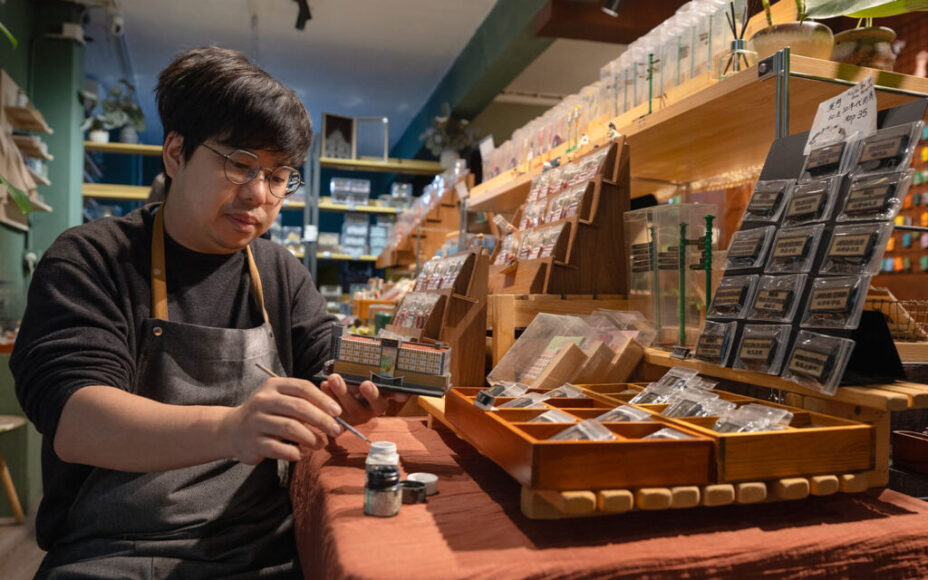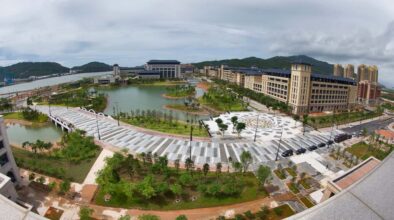In a semi-basement workshop, in the historic São Lázaro district, the artist Alan Lou sits at a long table, brush in hand, meticulously painting tiny replicas of Macao’s most iconic buildings. A lightbox above the shop doorway bears the legend: ‘The Bright Dawn Studio’.
Lou presides over a miniature version of old Macao, scaled down 150 times. In it, visitors find many of the same structures they see strolling around the city, Guia Lighthouse, the pink and white tower of São Francisco Garden and the Taipa Houses, for example. But this Macao also contains landmarks from the past, like the now-demolished Hotel Estoril. Lou’s also brought the former Judiciary Police headquarters back to life.
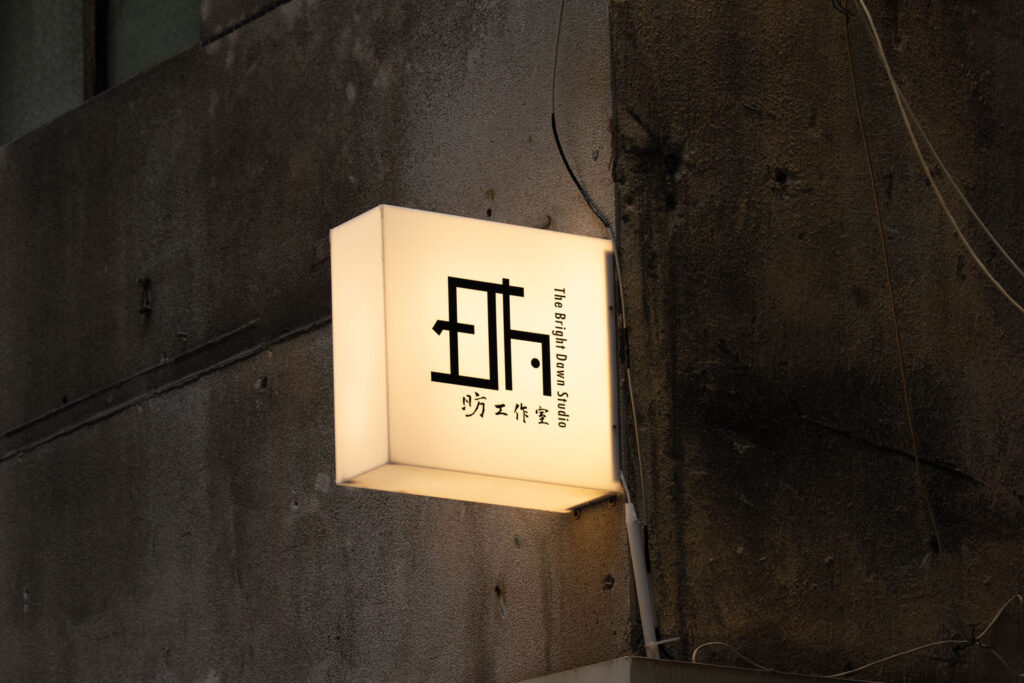
The Bright Dawn Studio, co-founded by Lou in early 2021, specialises in creating and selling 3D-printed models of Macao’s tangible heritage. “The studio’s fundamental development philosophy is to promote Macao culture and preserve the community’s memories by presenting things that belong to the Macao culture in miniature,” is how it describes itself online.
Demand is strong and the team – comprising Lou, his girlfriend Mabel Ho, one part-time employee and an orange cat – is busy. Lou says it’s hard to stay away from the work he loves; the 29-year-old admits to being at the studio seven days a week.
Bringing history into the present

Lou’s passion for history saw him earn a master’s degree in the subject from the University of Macau, where he focused on the cultural history of Macao’s streets and buildings. His academic background, coupled with work at the Macao Heritage Ambassadors Association, shaped his commitment to making history accessible to the public. Lou loves the idea he can enhance people’s understanding of this city’s intricately layered urban fabric through his work. At first, he imagined that would be through the papers he wrote as a researcher, but academia’s limited audience made him rethink. “This sense of loss prompted me to look for a better way to make more people see what I was doing,” Lou says.
The question of how best to do this took some time to answer. Through animated films, perhaps, or video games? In the end, Lou settled on 3D model making, a craft he had seen Japanese artists use to create anime figures. But first he had to figure out how to do it. “Five or six years ago, almost no one in Macao was doing 3D printing, so there was no one to teach me,” he recalls.
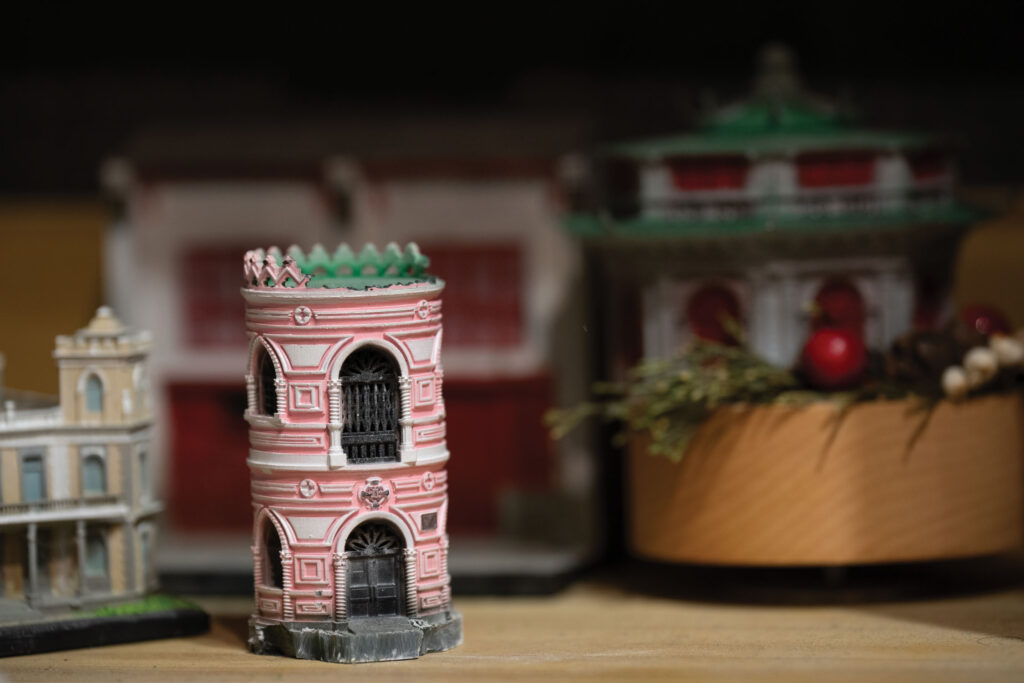
In 2019, Lou bought his first fused deposition modeling (FDM) 3D printer, which melts and extrudes filament layer by layer. He taught himself how to operate it through online tutorials. Lou’s first completed 3D project was of Tak Seng On Pawnshop’s iconic sign; the model was displayed in an exhibition about Macao’s traditional pawn shops during his tenure with the Heritage Ambassadors Association.
Shortly after, Lou launched his first model-making company, Good Farmer Production, with two friends. The Bright Dawn Studio emerged out of that initial collaboration. Four years on, the studio is churning out between a few dozen and several thousand individual models each month, depending on their complexity. Sold directly by the studio, Lou says his products are purchased mainly as mementos – as a way for people to “hold Macao in their hands”.
The art of 3D printing
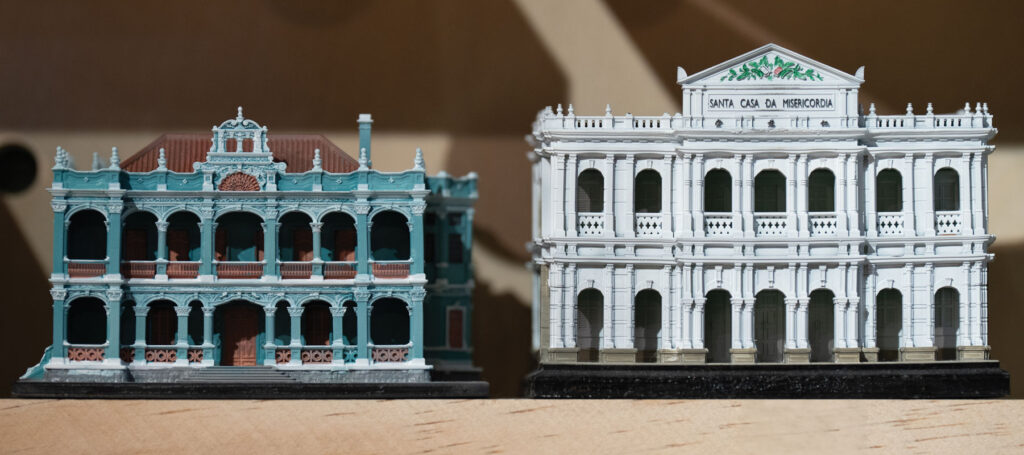
While 2D printing and 3D printing produce strikingly different results, Lou says their fundamentals are similar. The former is a single layer of ink on paper, while 3D printing stacks multiple layers of feedstock to build a three-dimensional object. Feedstock can be plastic, metal, resin or other types of suitable material that can withstand very high temperatures.
The American inventor Chuck Hull developed the first commercialized 3D printing technology, stereolithography (SLA), in the 1980s. This process uses a laser to cure liquid photopolymer resin, building solid objects layer by layer. By the 2010s, 3D printing had expanded beyond its initial industrial applications and was becoming more accessible to the public. In the early 2010s, mainland factories began mass-producing the printers, driving down costs and lowering the barrier to entry into the field.
The 3D printing process involves two key steps: first modeling, then the printing itself. Lou starts off by capturing multiple photographs of the building he’s about to miniaturise, from different angles, then processes and converts the images into a digital 3D model using specialised software. The finalised model gets sent to his 3D printer for fabrication.
Lou’s since moved on from his original FDM machine, as he wasn’t satisfied with the extensive post-printing processing its plastic models required. He invested in a high-precision SLA machine that uses ultraviolet light to print resin structures, resulting in smoother finishes. That printer, measuring about 25cm-by-25cm, takes roughly three hours to produce a 5cm-by-5cm model and can print up to eight models simultaneously.
Selling memories, one model at a time
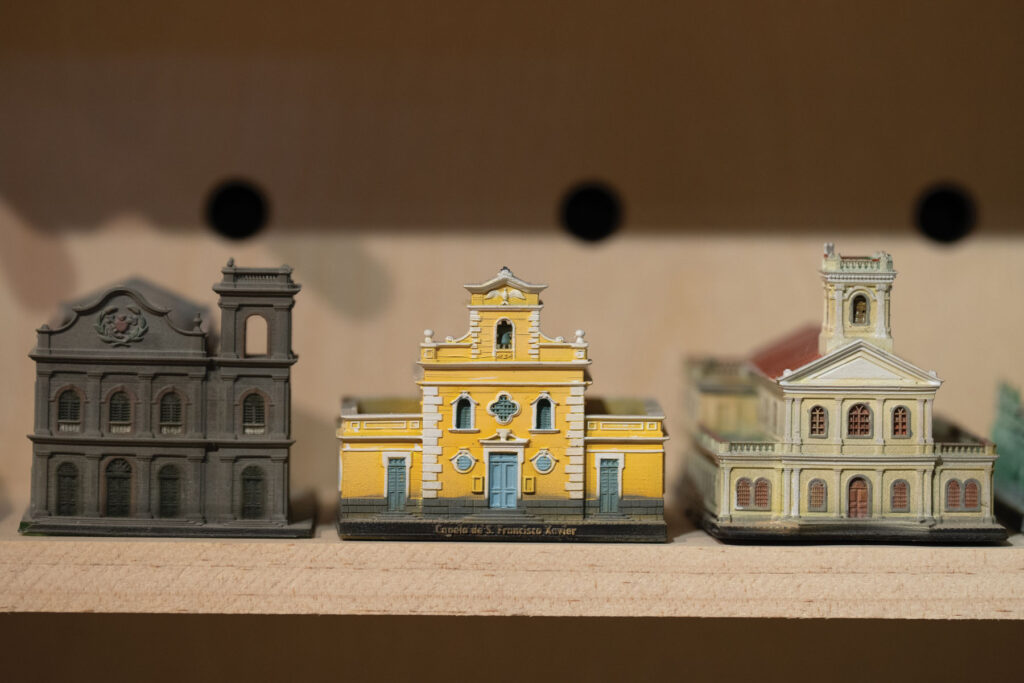
The Bright Dawn Studio has released over 100 unique models to date, categorised into two main themes: architectural landmarks and familiar elements of daily life in Macao – the likes of street signs, mailboxes and bus stops. Prices range from tens to hundreds of patacas, depending on size and intricacy. Tourists often purchase replicas of the city’s unique Chinese-Portuguese street signs as souvenirs, while locals tend to favour historic buildings. The latter are especially popular with older generations, who come seeking “memories of the past,” Lou says.
The most difficult project he’s ever embarked on was a model of the Ruins of St Paul’s, Macao’s most recognisable landmark. “It was very complicated because we had to work on the reliefs one by one,” Lou explains. A typical batch of new building models takes around two weeks to complete, taking in the whole process of data collection, photography, software modelling, printing and then colouring. The Ruins, in comparison, took all of six months.
The now-demolished Hotel Estoril was perhaps the studio’s most significant project. This Modernist structure, built in the 1960s and boasting a celebrated mural depicting the Roman goddess of luck, was pulled down last year to make way for a new central library. When demolition plans were announced a few years ago, The Bright Dawn Studio sensed public interest in the old hotel and mobilised to release a miniature version of it. The model became a bestseller, raising awareness of both architectural conservation in Macao and the studio’s unique products.
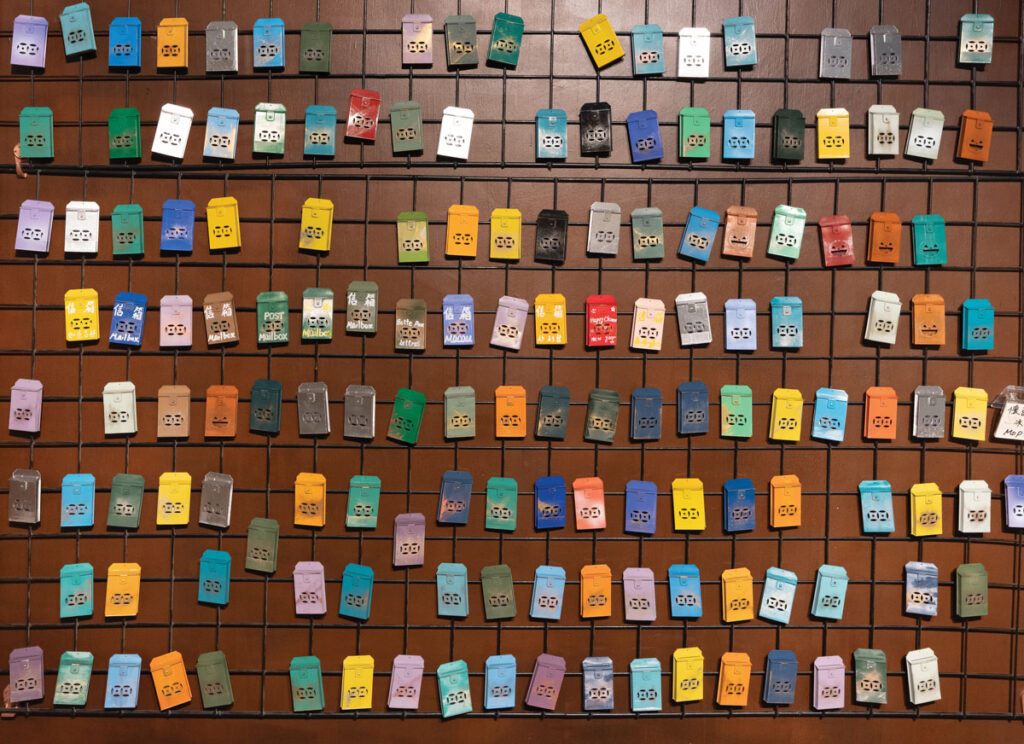
Another unexpected hit was the old Judiciary Police headquarters on Rua Central. “We sold almost a hundred of those models, and many judiciary police officers came to buy them,” Lou recalls. The original building was torn down a few years ago.
Lou is able to recreate buildings that no longer exist if there is enough visual material available from when they stood, intact. Two particularly valuable resources in this endeavor are Liu Xian Jiao’s book, The Architectural Heritage in Macao and the Cultural Affairs Bureau’s website, he says.
The Bright Dawn Studio continues to release new models regularly; recent projects include the former Hotel Bela Vista, a striking 150-year-old structure perched on Penha Hill, and the former Yuet Wah School building at 55 Calçada da Vitória, now home to a centre for culture and performing arts.
Lou says he has no interest in handing his models over to a factory for mass production, as believes it’s the “emotion and warmth” of handmade craftsmanship that his customers appreciate.
‘Don’t be afraid to try’

Lou is a very busy fellow. In addition to manning the studio and running model painting workshops, he teaches 3D printing and history part-time at the Macao Polytechnic University. But he’s still always on the lookout for more ways to spread awareness of the city’s history and heritage. His latest endeavour? Video games – one of his original interests before choosing 3D models. For over a year now, he has dedicated an hour a day to learning the art of game development. Lou plans to release his first game, set in 1870s Macao, in the second half of this year.
His philosophy is reflected in The Bright Dawn Studio’s name, Lou notes. “Every sunrise is a new beginning. Be brave and don’t be afraid to try,” he says.
